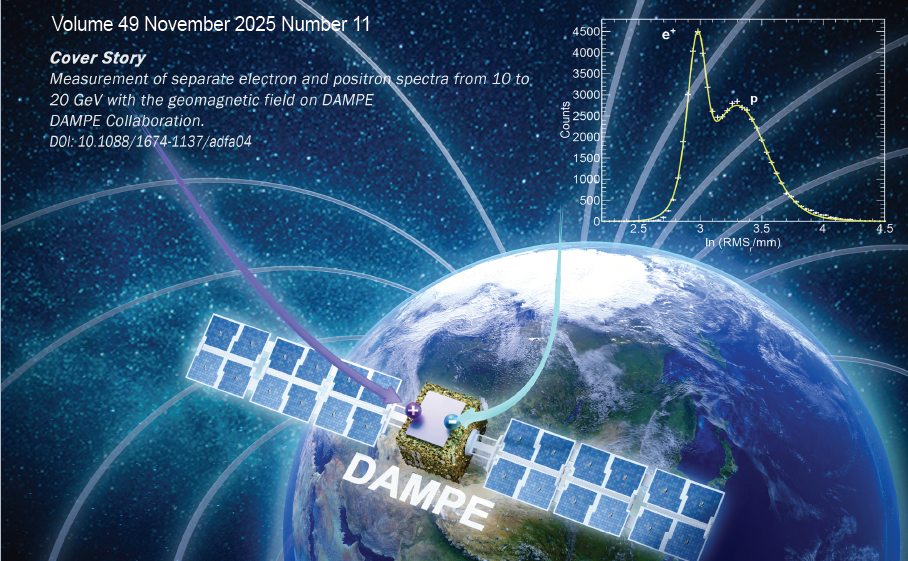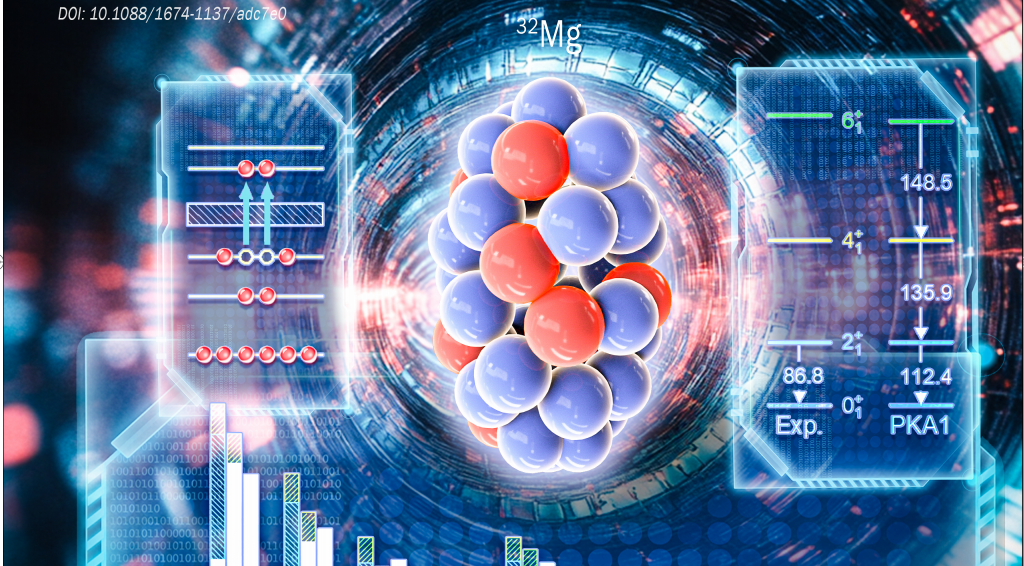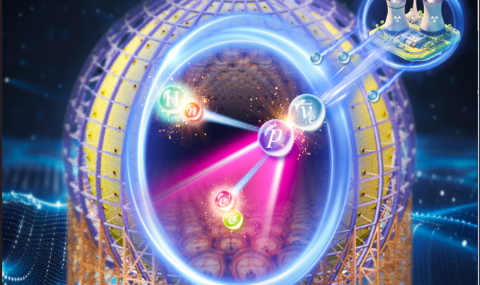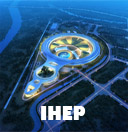Highlights
-
Physical parameter regression from black hole images using a multiscale adaptive neural network
2025, 49(12): 125105. doi: 10.1088/1674-1137/adf542
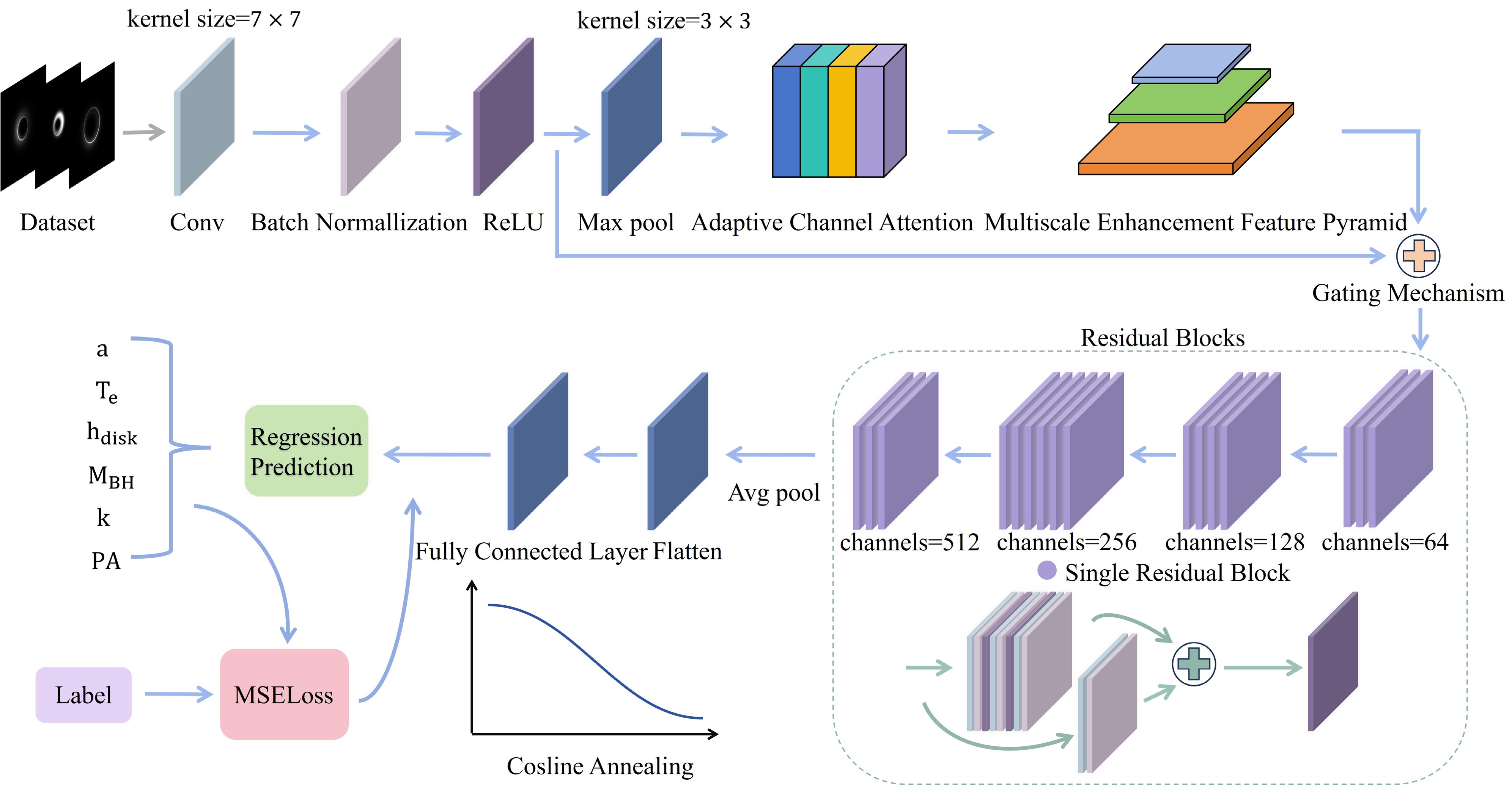 High-precision regression of physical parameters from black hole images generated by General Relativistic Ray Tracing (GRRT) is essential for investigating spacetime curvature and advancing black hole astrophysics. However, owing to limitations in observational resolution, high observational costs, and imbalanced distributions of positive and negative samples, black hole images often suffer from data scarcity, sparse parameter spaces, and complex structural characteristics. These factors pose significant challenges to conventional regression methods based on simplified physical models. To overcome these challenges, this study introduces the Multiscale Adaptive Network (MANet), a novel regression framework grounded in deep learning. MANet integrates an Adaptive Channel Attention (ACA) module to selectively enhance features in physically informative regions. Meanwhile, a Multiscale Enhancement Feature Pyramid (MEFP) is employed to capture fine-grained spatial structures, such as photon rings and accretion disks, while alleviating information loss due to downsampling. Experimental evaluations on GRRT-simulated datasets demonstrate that MANet substantially improves parameter estimation accuracy and generalization capability in high-dimensional parameter spaces, outperforming existing baseline approaches. This framework presents a promising avenue for high-precision parameter regression in Event Horizon Telescope (EHT) data analysis and broader astrophysical imaging applications characterized by sparse and noisy data.
High-precision regression of physical parameters from black hole images generated by General Relativistic Ray Tracing (GRRT) is essential for investigating spacetime curvature and advancing black hole astrophysics. However, owing to limitations in observational resolution, high observational costs, and imbalanced distributions of positive and negative samples, black hole images often suffer from data scarcity, sparse parameter spaces, and complex structural characteristics. These factors pose significant challenges to conventional regression methods based on simplified physical models. To overcome these challenges, this study introduces the Multiscale Adaptive Network (MANet), a novel regression framework grounded in deep learning. MANet integrates an Adaptive Channel Attention (ACA) module to selectively enhance features in physically informative regions. Meanwhile, a Multiscale Enhancement Feature Pyramid (MEFP) is employed to capture fine-grained spatial structures, such as photon rings and accretion disks, while alleviating information loss due to downsampling. Experimental evaluations on GRRT-simulated datasets demonstrate that MANet substantially improves parameter estimation accuracy and generalization capability in high-dimensional parameter spaces, outperforming existing baseline approaches. This framework presents a promising avenue for high-precision parameter regression in Event Horizon Telescope (EHT) data analysis and broader astrophysical imaging applications characterized by sparse and noisy data. -
On the pole trajectory of the subthreshold negative parity nucleon with varying pion masses
2025, 49(12): 123103. doi: 10.1088/1674-1137/adfa02
 We study the pole trajectory of the recently established subthreshold negative-parity nucleon pole, namely the
We study the pole trajectory of the recently established subthreshold negative-parity nucleon pole, namely the$N^*(920)$ , with varying pion masses in the scheme of linear σ model with nucleons, using the$N/D$ unitarization method. We find that, as the pion mass increases, the pole moves toward the real axis. For larger pion masses, at tree level, the pole falls to a specific point on u-channel cut and crosses to the adjacent Riemann sheet defined by the logarithmic u-channel cut. At the one-loop level, the pole does not meet the u-cut up to$m_\pi=0.36$ GeV. We also re-examined the σ pole trajectory and found it to be in good agreement with the Roy equation analysis result. -
Feasibility study of measuring interaction cross sections of hypernuclei produced in projectile fragmentation reactions with WASA-FRS setup
2025, 49(12): 124003. doi: 10.1088/1674-1137/adf4b2
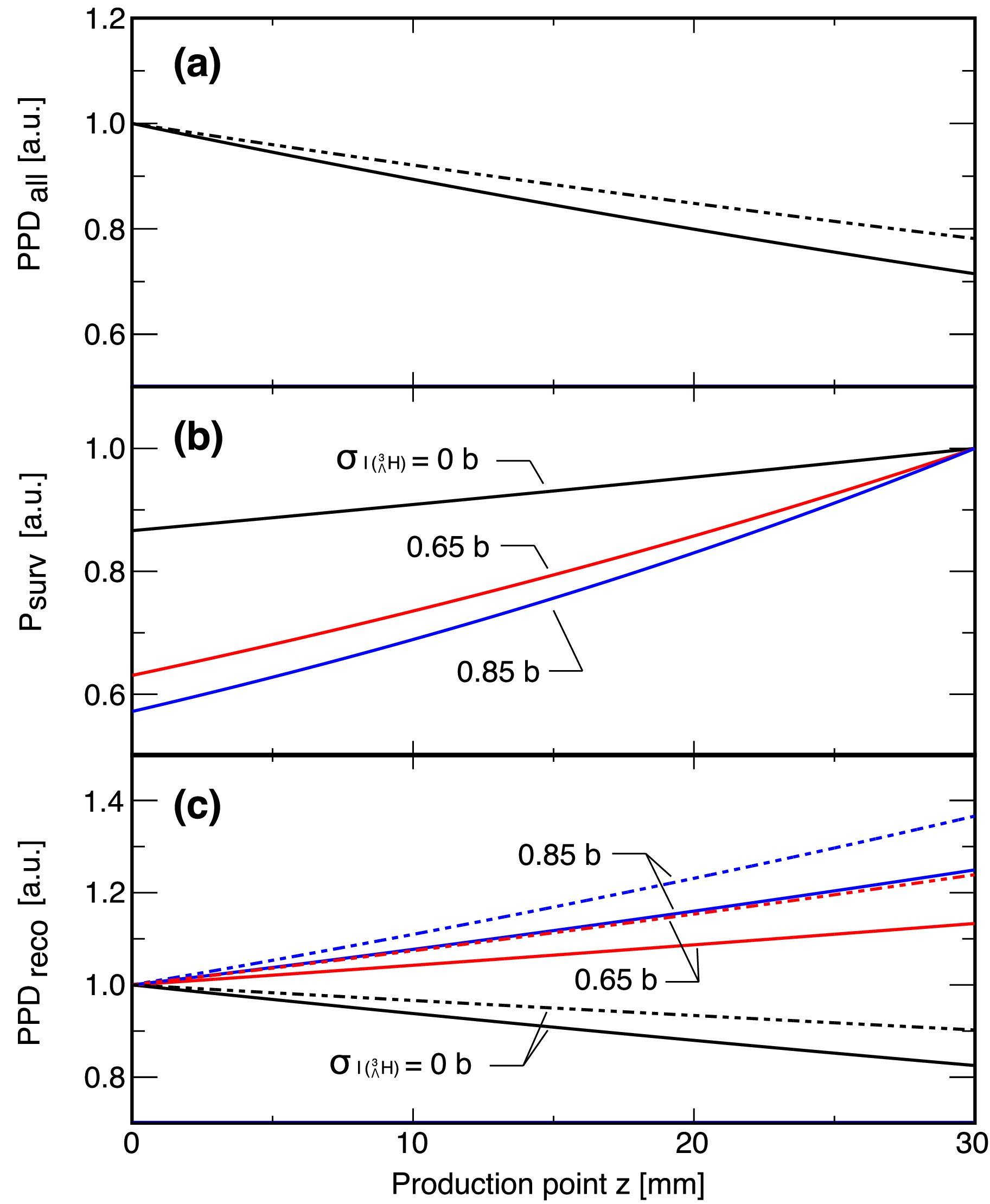 A novel method is proposed to measure the interaction cross sections of short-lived hypernuclei with the WASA-FRS experimental setup at GSI and FAIR. The interaction cross sections of hypernuclei, produced in projectile fragmentation reactions at relativistic energies, can be determined from their production point distribution within a target. The feasibility of such a measurement is evaluated through detailed Monte Carlo simulations. The results indicate that an aimed uncertainty on the order of 10% can be achieved for the case of a hypertriton, demonstrating the potential of this method for studying matter radii and the possible hyperon halo structure of hypernuclei.
A novel method is proposed to measure the interaction cross sections of short-lived hypernuclei with the WASA-FRS experimental setup at GSI and FAIR. The interaction cross sections of hypernuclei, produced in projectile fragmentation reactions at relativistic energies, can be determined from their production point distribution within a target. The feasibility of such a measurement is evaluated through detailed Monte Carlo simulations. The results indicate that an aimed uncertainty on the order of 10% can be achieved for the case of a hypertriton, demonstrating the potential of this method for studying matter radii and the possible hyperon halo structure of hypernuclei.
Just Accepted
More >
-
Neutron Leakage Spectra Benchmark of Spherical Polyethylene Sample with a 252Cf fission Source
Published: 2025-12-02
-
Interplay of Lyapunov exponents, phase transitions and chaos bound in nonlinear electrodynamics black hole
Published: 2025-11-29, doi: 10.1088/1674-1137/ae210d
-
95 GeV Higgs boson and nano-Hertz gravitational waves from domain walls in the N2HDM
Published: 2025-11-29, doi: 10.1088/1674-1137/ae2082
Recent
More >
-
Alpha-decay systematics and a new scaling law in heavy and superheavy nuclei
2026, 50(1): 014111-014111-16. doi: 10.1088/1674-1137/ae0307Show AbstractThis paper presents a systematic investigation of α-decay properties in even-even isotopic chains of Po (
$ Z=84 $ ), Cm ($ Z=96 $ ), Hs ($ Z=108 $ ), and Fl ($ Z=114 $ ) using a semi-classical approach. Ground-state properties, including binding energies and nucleon density distributions, are calculated by minimizing a Skyrme-based energy density functional augmented with microscopic corrections. The derived nuclear densities and$ Q_\alpha $ -values are used to construct the α decay potential through the double-folding model (DFM). The α-decay dynamics are treated quantum mechanically based on the preformed cluster model (PCM) within the Wentzel-Kramers-Brillouin (WKB) approximation. The analysis reveals distinct signatures of spherical shell closures at$ N=126 $ and$ N=184 $ , along with secondary anomalies near$ N = 148 $ ,$ 152 $ , and$ 162 $ , which are consistent with deformed sub-shell effects predicted by nuclear structure models. The signature of daughter nuclear stability is systematically observed through one or more of the following features: shortened α-decay half-lives, enhanced$ Q_\alpha $ values, increased penetrabilities, and/or reduced assault frequencies. A new universal scaling relation, relating the decay half-lives and a scaled combination of nuclear charge and decay energy, is established, showing strong correlation across a wide mass range. Systematic comparisons demonstrate particular predictive advantages for superheavy nuclei, with the proposed method accurately reproducing observed half-life variations across all isotopic chains. The results confirm the sensitivity of α-decay observables to both spherical and deformed shell effects and reinforce the role of α-decay systematics as powerful tools for probing nuclear structure and guiding predictions in unexplored regions of the nuclear chart. -
0νββ decay nuclear matrix elements under Left-Right symmetric model from the spherical quasi-particle random phase approximation method with realistic force
2026, 50(1): 014113-014113-11. doi: 10.1088/1674-1137/ae1196Show AbstractWe perform the calculation of nuclear matrix elements for the neutrinoless double beta decays under a Left-Right symmetric model mediated by light neutrinos, and we adopt the spherical quasi-particle random-phase approximation (QRPA) approach with a realistic force. For eight nuclei: 76Ge, 82Se, 96Zr, 100Mo, 116Cd, 128Te, 130Te, and 136Xe, related nuclear matrix elements are given. We analyze each term, and the details of contributions from different parts are also provided. For the q term, we find that the weak-magnetism components of the nucleon current contribute equally to other components such as the axial-vector. We also discuss the influence of short-range correlations on these NMEs. It is found that the R term is more sensitive to short-range correlations than other terms due to the large portion of the contribution from high exchange momenta.
-
Dynamic shadow of a black hole with a self-interacting massive complex scalar hair
2026, 50(2): 025102-025102-12. doi: 10.1088/1674-1137/ae1442Show AbstractWe investigate the dynamic shadows of a black hole with a self-interacting massive complex scalar hair. The complex scalar field
$\psi$ evolves with time t, and its magnitude on the apparent horizon$|\psi_{\rm h}|$ starts from zero, undergoes a sharp rise followed by rapid oscillations, and eventually converges to a constant value. The variation in the photon sphere radius$r_{\rm ps}$ is similar to that of the magnitude$|\psi_{\rm h}|$ . Owing to the emergence of the complex scalar hair$\psi$ , the apparent horizon radius$r_{\rm h}$ starts increasing sharply and then smoothly approaches a stable value eventually. The shadow radius$R_{\rm sh}$ of the black hole with an accretion disk increases with time$t_{\rm o}$ at the observer's position. In the absence of an accretion disk, the shadow radius$R_{\rm sh}$ is larger and also increases as$t_{\rm o}$ increases. Furthermore, we slice the dynamical spacetime into spacelike hypersurfaces for all time points$t$ . For the case with an accretion disk, the variation in$R_{\rm sh}$ is similar to that in the apparent horizon$r_{\rm h}$ , because the inner edge of the accretion disk extends to the apparent horizon. In the absence of an accretion disk, the variation in$R_{\rm sh}$ is similar to that in the photon sphere radius$r_{\rm ps}$ , because the black hole shadow boundary is determined by the photon sphere. As the variation in$r_{\rm ps}$ is induced by$\psi$ , it can be stated that the variation in the size of the shadow is similarly caused by the change in$\psi$ . Regardless of the presence or absence of the accretion disk, the emergence of the complex scalar hair$\psi$ causes the radius$R_{\rm sh}$ of the shadow to start changing. Moreover, we investigate the time delay$\Delta t$ of light propagating from light sources to the observer. These findings not only enrich the theoretical models of dynamic black hole shadows but also provide a foundation for testing black hole spacetime dynamics.
Archive
ISSN 1674-1137 CN 11-5641/O4
Original research articles, Ietters and reviews Covering theory and experiments in the fieids of
- Particle physics
- Nuclear physics
- Particle and nuclear astrophysics
- Cosmology
Author benefits
- A SCOAP3 participating journal - free Open Access publication for qualifying articles
- Average 24 days to first decision
- Fast-track publication for selected articles
- Subscriptions at over 3000 institutions worldwide
- Free English editing on all accepted articles
News
- CPC Announces 2025 Outstanding Reviewers
- Chinese Physics C Outstanding Reviewer Award 2023
- Impact factor of Chinese Physics C is 3.6 in 2022
- 2022 CPC Outstanding Reviewer Awards
- The 2023 Chinese New Year-Office closure
Cover Story
- Cover Story (Issue 11, 2025) The Earth-Magnet Assists DAMPE in Studying Cosmic Anti-Electrons
- Cover Story (Issue 9, 2025): Precise measurement of χc0 resonance parameters and branching fractions of χc0,c2→π+π-/ K+K-
- Cover Story (Issue 8, 2025) A Novel Perspective on Spacetime Perturbations: Bridging Riemannian and Teleparallel Frameworks
- Cover Story (Issue 7, 2025) Evidence of the negative parity linear chain states in 16C
- Cover Story (Issue 1, 2025) Comments on Prediction of Energy Resolution inthe JUNO Experiment






